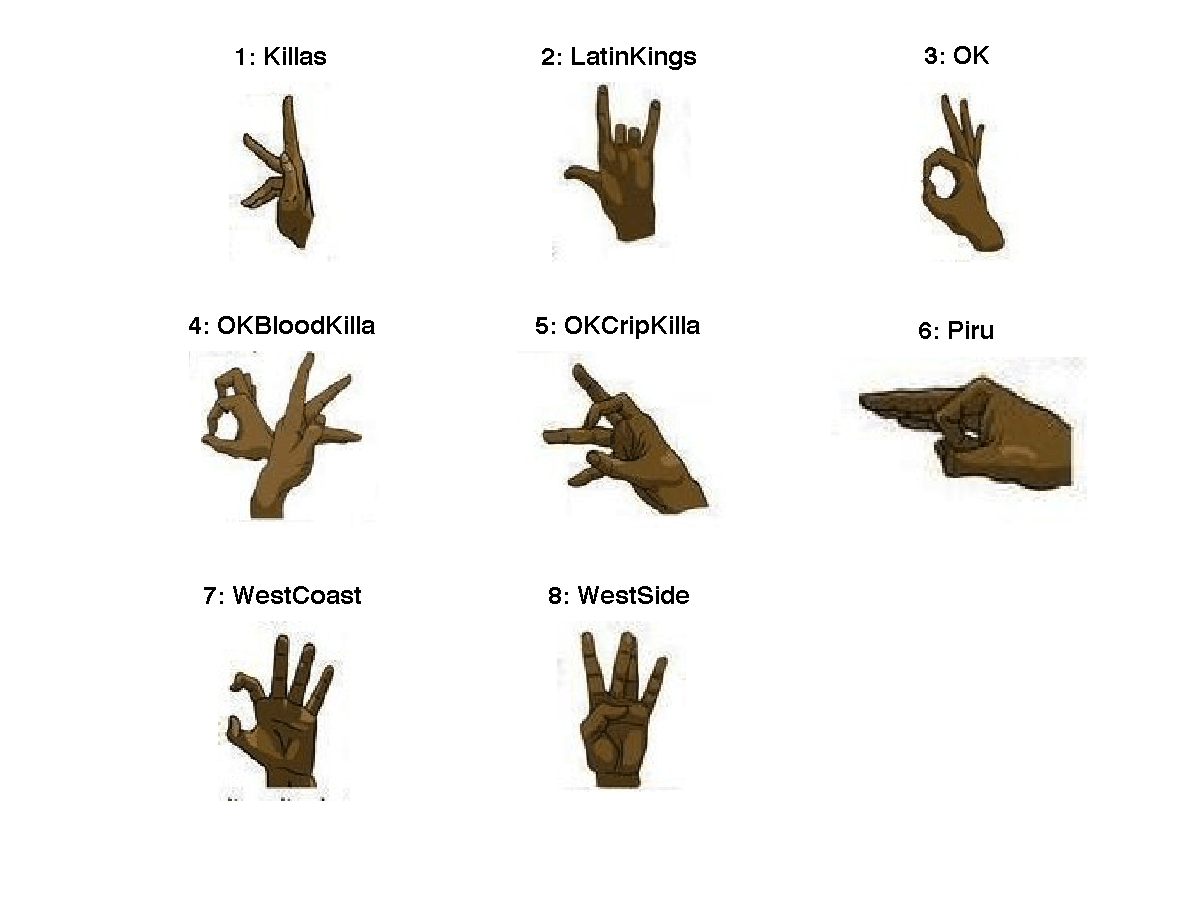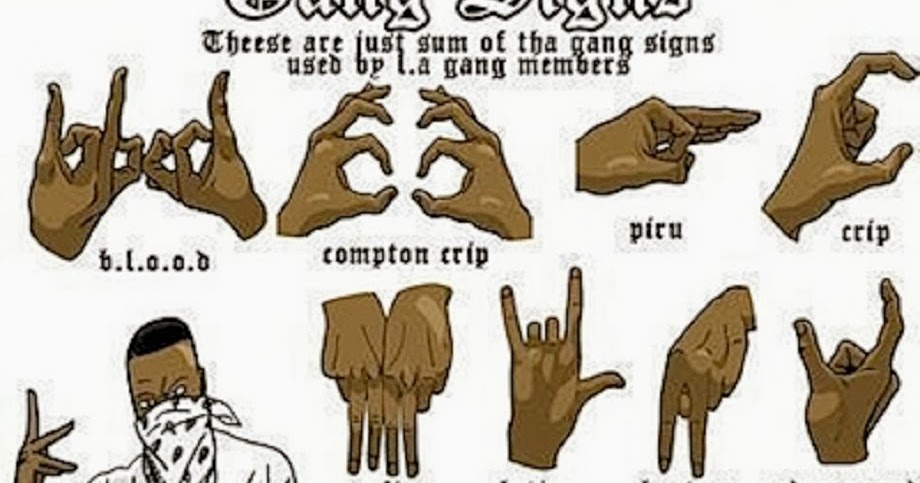In a world increasingly driven by visual communication, understanding the subtleties of nonverbal cues, especially hand gestures, can be crucial. While we often focus on the spoken word, our hands often speak volumes, conveying messages that words sometimes fail to express. However, this intricate language of hand gestures is not without its complexities. What might be a harmless gesture in one culture could be deeply offensive in another. This is especially true when considering hand signs that have been associated with gangs or other groups, often leading to misinterpretations and unintended consequences.
The human hand, with its intricate design of bones, muscles, and tendons, is capable of a vast array of movements. This versatility extends beyond simple actions, allowing us to express emotions, share ideas, and navigate social situations through gestures. From a young age, we learn to interpret and use these nonverbal cues, often unconsciously absorbing the nuances of our cultural backgrounds.
However, the very fluidity that makes hand gestures such a powerful tool for communication also makes them susceptible to misinterpretations. This is amplified when considering gestures that have been associated with specific groups, such as gangs. The meanings attributed to these signs often vary significantly depending on geographical location, cultural context, and even the individual's personal experiences. A seemingly innocuous gesture in one neighborhood could be misconstrued as a sign of aggression or affiliation in another, leading to misunderstandings, fear, and potentially even dangerous situations.
The potential for miscommunication highlights the crucial need for awareness and sensitivity when interpreting hand gestures, particularly those that have been linked to gangs. It's important to remember that attributing meaning to a single hand gesture without understanding the broader context is akin to judging a book by its cover. Focusing solely on potentially problematic gestures risks overlooking the individual and the multitude of factors that shape their communication style. This approach can perpetuate stereotypes, fuel prejudice, and hinder meaningful dialogue.
Instead of jumping to conclusions based on isolated gestures, it's essential to adopt a more holistic perspective. Observing a person's overall body language, facial expressions, tone of voice, and considering the social context can provide a much richer understanding of their intended message. Engaging in open and respectful communication, asking for clarification when unsure, and being mindful of our own biases are crucial steps in fostering understanding and bridging cultural divides.
Advantages and Disadvantages of Focusing on Gang-Related Hand Signs
| Advantages | Disadvantages |
|---|---|
| Increased awareness of potential gang activity in certain areas. | Potential for profiling and discrimination based on misinterpretation of gestures. |
| Can aid law enforcement in investigations involving gang-related crime. | Creates an atmosphere of fear and mistrust, particularly among young people. |
| May help educators and youth workers identify and support individuals at risk of gang involvement. | Oversimplifies the complex issue of gang violence and ignores root causes. |
Best Practices for Promoting Understanding and Safety
While focusing solely on identifying potential gang signs can be misleading, understanding the nuances of nonverbal communication and the potential for misinterpretation is crucial. Here are some best practices for fostering safer and more inclusive communities:
1. Promote Cultural Sensitivity and Awareness: Encourage education and open dialogue about different cultures, communication styles, and the potential for misinterpretations.
2. Context is Key: Emphasize that interpreting gestures should always consider the broader context, including body language, tone of voice, social setting, and individual background.
3. Challenge Stereotypes: Discourage generalizations and assumptions about individuals based on their appearance or perceived affiliations.
4. Focus on Open Communication: Promote respectful communication, active listening, and asking for clarification when unsure about the meaning of a gesture.
5. Address Root Causes: Support initiatives that address the underlying social, economic, and systemic factors that contribute to gang violence and social disharmony.
Frequently Asked Questions
1. Can a single hand gesture indicate gang affiliation?
It's impossible to determine gang affiliation based solely on a single hand gesture. Context, including other nonverbal cues, social setting, and individual background, is essential.
2. Are all hand gestures associated with gangs inherently dangerous?
No, many hand gestures have different meanings across cultures and contexts. Attributing negative connotations to specific gestures without understanding their broader meaning can perpetuate stereotypes and lead to misunderstandings.
3. How can I learn more about different cultural interpretations of hand gestures?
Resources like books, online articles, and cultural exchange programs can provide insights into various cultural interpretations of nonverbal communication.
4. What should I do if I feel threatened by someone's hand gestures?
If you feel unsafe, trust your instincts, remove yourself from the situation, and seek assistance from trusted individuals or authorities.
5. How can I be more aware of my own biases when interpreting hand gestures?
Self-reflection, seeking diverse perspectives, and engaging in open-minded conversations can help identify and challenge personal biases.
6. How can we create a more inclusive environment that respects different forms of communication?
Promoting cultural sensitivity, challenging stereotypes, and fostering open dialogue are crucial steps toward creating a more inclusive society.
7. What are some alternative explanations for hand gestures that might be mistaken for gang signs?
Gestures can convey cultural greetings, express personal style, or be part of sign language, among other things. It's crucial to avoid jumping to conclusions.
8. How can parents and educators address the issue of gang violence and the influence of gang culture with young people?
Open communication, providing accurate information, discussing the dangers of gang involvement, and promoting positive alternatives are essential.
Tips for Effective Nonverbal Communication
- Be mindful of your own hand gestures and their potential interpretations in different contexts.
- Observe others' body language and nonverbal cues to gain a better understanding of their messages.
- Ask for clarification if you're unsure about the meaning of a gesture.
- Avoid using hand gestures that are considered offensive or disrespectful in certain cultures.
- Remember that communication is a two-way street, involving both speaking and listening with attentiveness.
In conclusion, while the desire to understand potentially dangerous hand gestures is understandable, it's crucial to approach this topic with nuance and sensitivity. Attributing negative connotations to specific gestures without considering the broader context risks perpetuating stereotypes and hindering meaningful communication. By focusing on cultural awareness, respectful dialogue, and understanding the complexities of nonverbal communication, we can create a safer and more inclusive society for everyone. Remember, true understanding comes from open minds, empathetic hearts, and a willingness to see beyond simplistic labels.
Taming excels tiny rows a deep dive into row height adjustment
Unlock the melody your guide to free violin and flute sheet music
Simplify your taxes a guide to e hasil selangor bayaran
Why Were Gangs Created - Khao Tick On
gang hand signs guide - Khao Tick On
gang hand signs guide - Khao Tick On
gang hand signs guide - Khao Tick On
gang hand signs guide - Khao Tick On
gang hand signs guide - Khao Tick On
gang hand signs guide - Khao Tick On
Handzeichen Crips Und Bloods at Tristan Soto blog - Khao Tick On
Fille Grillz, Image Tokyo Ghoul, Arte Do Hip Hop, Arte Cholo, Rap - Khao Tick On
gang hand signs guide - Khao Tick On
The A to Z Deadly Slang by Gangs of New York ~ The Urban Walker - Khao Tick On
gang hand signs guide - Khao Tick On
gang hand signs guide - Khao Tick On
gang hand signs guide - Khao Tick On
gang hand signs guide - Khao Tick On














